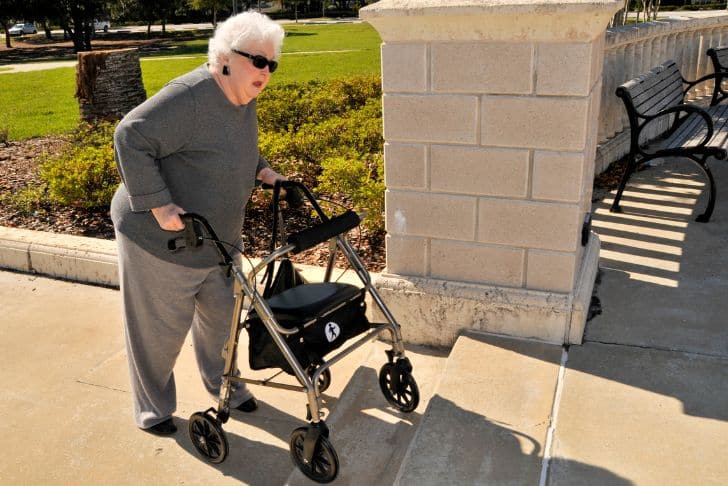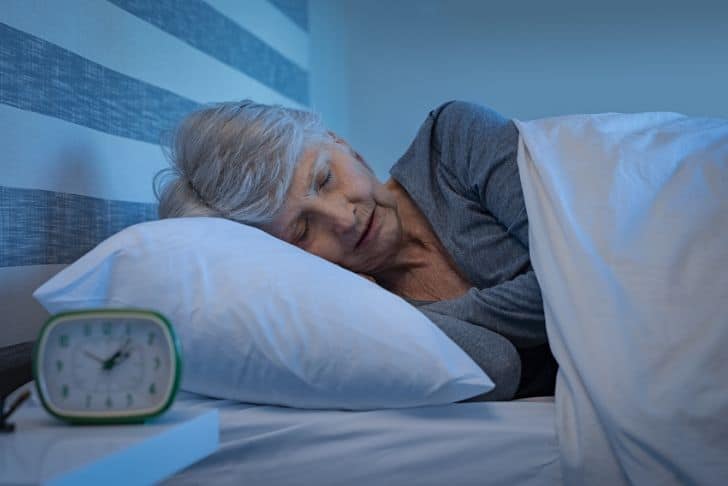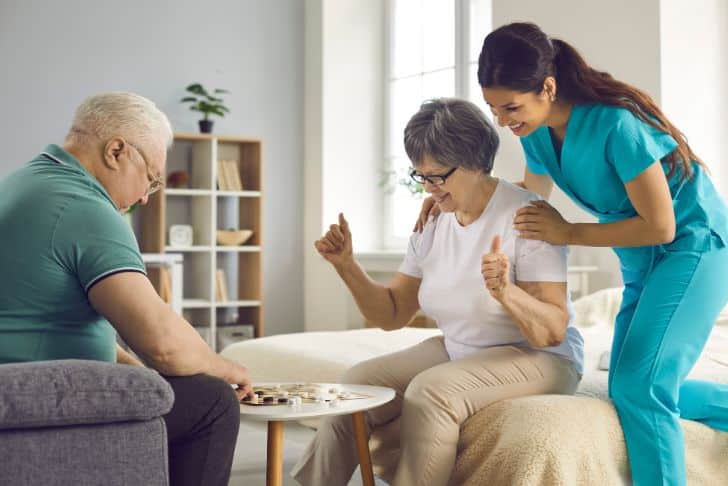Each passing year brings about a fresh set of challenges, particularly for older adults susceptible to damage due to falls, which can have severe consequences. In this enlightening piece, “Increasing Stability in Older Adults: Balance and Strength Exercises”, you’ll discover the importance of balance and strength exercises as a preventative measure against falls. Covered in detail are key factors contributing to falls, from altered balance due to vision changes to medication and home hazards. Furthermore, this resource delves into offering you practical, specific exercises such as the ‘sit-to-stand’, which improves body mechanics and boosts leg strength. Sprinkle in useful tips related to fall prevention, and you have a comprehensive, preventive guide for older people worried about falls or those helping them. Let’s help safeguard your golden years with this crucial information suited for maintaining stability and strength.
Understanding the Need for Balance and Strength Exercises in Older Adults
As we age, our bodies naturally experience a series of changes that can impact our physical abilities. Some of these changes include reduced muscle mass, loss of flexibility, and slower reflexes, which can all contribute to instability and an elevated risk of falls.
The Impact of Aging on Stability
Aging can significantly affect your stability and increase your risk of falls and injuries. One of the main reasons for this is that as you get older, your muscles tend to lose their strength and elasticity, thereby leading to increased instability and decreased mobility. That’s why it is so important to maintain a regular regimen of balance and strength exercises.
Statistics of Falls and Injuries in Older Adults
Each year, more than 25% of adults aged 65 or older experience a fall, with 3 million of them requiring treatment in emergency departments for fall-related injuries. These statistics underscore the significance of falls and fall-related injuries in older adults.
Factors Contributing to Fall Risks in Older Adults
Numerous factors contribute to the risk of falls in older adults, including balance and walking problems, use of multiple medications, home hazards like dim lighting and tripping hazards, sudden drops in blood pressure, and even issues related to feet and footwear.
Balance and Walking Problems in Older Adults
Balance and walking problems are a common affliction among older adults and can significantly increase their risk of falls.
How Vision Changes Affect Balance
Changes in vision often coincide with aging and can majorly affect your balance. This happens because your eyes provide critical information to your brain about your environment and your body’s position within it. Age-related vision changes can distort this information, making it difficult to maintain balance.
Understanding Vestibular Problems
The vestibular system, which includes parts of the inner ear and brain, helps control balance and eye movements. If this system is damaged by disease, aging, or injury, vestibular disorders can result, leading to problems with balance and spatial orientation.
Altered Sensation in the Feet and Its Impact on Balance
As you age, it’s common to experience changes in the sensation in your feet. These changes can affect your balance as your feet provide crucial feedback to your brain about your body’s position on the ground.

Role of Medications in Fall Risks
As we grow older, the number of medications we take can increase and this can, in turn, affect your stability and increase your risk of falls.
Effects of Multiple Medications on Stability
When you take five or more medicines, the risk of falls amplifies. This happens as some medications can cause dizziness, drowsiness, or blurred vision, all of which can lead to instability and risk of falling.
How Certain Medications Increase the Risk of Falls
Certain medications, especially sedatives, antidepressants, and even some over-the-counter medicines, can affect your balance and increase your risk of falling.
Home Hazards: Unseen Dangers for Older Adults
We often overlook potential hazards in our homes. However, these elements can significantly contribute to the risk of trips and falls in older adults.
How Dim Lighting Can Contribute to Falls
Dim lighting can make it difficult to see objects or hazards that may be in your path. This is often a substantial issue at night when you might need to get up and move around. Always ensure that your home is adequately lit, especially the areas where you walk most frequently.
Identifying and Mitigating Trip Hazards
There are countless potential trip hazards in the home, such as loose carpets, uneven floors, clutter, and even pets. Identifying and removing these hazards can considerably reduce the risk of falls.
Why Night-Time Can Be Risky for Older Adults
During the night, decreased visibility and disorientation can elevate the risk of tripping or falling for older adults. Keep a nightlight on and ensure your path to the bathroom is clear to minimize this risk.

Overcoming Feet and Footwear Issues
Your feet and your choice of footwear play a significant role in maintaining balance and avoiding falls.
Choosing the Right Footwear for Stability
Proper footwear can contribute a lot to your overall stability. Shoes should be comfortable, non-slip, and provide good support.
Addressing Feet-Related Issues that Increase Fall Risks
Issues like foot pain, foot deformities, poor circulation, and nerve damage can increase your risk of falls by affecting your balance. If you’re facing such issues, it is crucial to seek timely medical intervention.
Exercises to Prevent Falls
Exercises that focus on balance and strength training can help to reduce the risk of falls in older adults.
Understanding the Importance of Balance and Strength Training
Balance exercises enhance your ability to control and maintain your body’s position, while strength training exercises build and maintain muscle tissue that helps to boost balance and prevent falls.
Guidelines and Precautions Before Starting Exercises
Before starting a new exercise routine, it’s important to consult your doctor or a physical therapist, especially if you have weak balance. By customizing an exercise plan to your needs and abilities, they can ensure you exercise safely and beneficially.
Role of Physical Therapists in Fall Prevention Training
Physical therapists can play a crucial role in fall prevention by providing exercises designed to improve balance and strength and minimize the risk of falls.

Sit-to-Stand Exercise: A Basic Strength Building Exercise
The Sit-to-Stand exercise is a simple and effective exercise to improve leg strength and balance.
Understanding the Benefits of Sit-to-Stand Exercise
This exercise strengthens your leg muscles, optimizes body mechanics, and enhances balance, which are all vital in reducing the risk of falls.
Step-by-Step Guide to Perform Sit-to-Stand Exercise
The sit-to-stand exercise involves a series of movements starting from a seated position on a sturdy chair to standing upright and then back to the seated position.
Advanced Versions of Sit-to-Stand Exercise
For an extra challenge, try performing the sit-to-stand exercise with added resistance like hand weights. However, always consult your doctor or therapist before attempting an advanced version of any exercise.
Balance Exercises for Better Stability
Aiming to improve stability, balance exercises are essential for older adults.
Importance of Balance Exercises
Balance exercises are crucial for enhancing stability and avoiding falls. They strengthen the muscles that support balance and improve your body’s ability to react and maintain balance if you stumble or trip.
Different Types of Balance Exercises and How to Perform Them
From heel-to-toe walks to leg raises, there are a variety of balance exercises that can be safely performed by older adults. Ensure that you have a support like a chair or wall nearby for safety while performing these exercises.
Additional Steps to Prevent Falls
While exercises play a pivotal role in preventing falls, other measures also contribute significantly.
The Role of Regular Check-ups in Fall Prevention
Regular check-ups can assist in detecting and managing health conditions that increase your risk of falls. It’s also a good time to discuss your medications and their potential effect on balance with your doctor.
Importance of Home Inspection for Fall Prevention
Inspect your home for potential hazards such as loose rugs, clutter, or poor lighting. Addressing and removing these hazards can reduce the risk of falls considerably.
Safely Exercising at Home: Precautions and Tips
Always ensure that you are exercising safely when at home. Keep adequate space for movement, wear appropriate footwear, and, if possible, have someone present while you exercise for support and supervision.
Staying Active to Avoid Falls
Staying active is crucial for maintaining the endurance, strength, and flexibility required to prevent falls.
Various Ways to Stay Active and Agile
Staying active does not necessarily require rigorous workouts. Even light activities such as daily walks, gentle stretching, or leisure activities like gardening can help you stay agile and reduce the risk of falls.
Role of Regular Physical Activity in Preventing Falls
Regular physical activity aids in maintaining strength and flexibility, enhances balance and coordination, improves your reaction time, and helps to prevent falls.
Choosing Suitable Activities and Exercises for Older Adults
Every individual is unique and so are their capacities and restrictions. Choose activities that are enjoyable, safe, and suitable to your physical abilities. Remember, it’s essential to listen to your body and adjust your activities accordingly.
